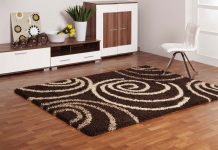 For the past 25 years, the laminate flooring industry has been one of the fastest growing industries in the United States.
For the past 25 years, the laminate flooring industry has been one of the fastest growing industries in the United States.
Invented in 1977 by the Swedish company Pergo, it was first marketed in Europe and reached the U.S. in 1994.
Since then, its popularity has risen steadily, and for several very good reasons.
Laminate flooring is made up of synthetic materials to imitate the look of natural wood or stone. The manufacturing process may be either direct pressure or high pressure laminate, with the difference being in the number of layers – three and five respectively.
The laminate floor consists of a high-density core of fiberboard that has been treated with water-repellant chemicals, and then covered with an outer decorative appliqué and an aluminum oxide finish.
One of the biggest attractions of laminate flooring is its ease and relatively low cost of installation compared to wood or stone. Each plank or tile of laminate material is designed to be set into place with the next without the necessity of staples, nails, glue or cement.
The flooring then “floats” on a foam or film under-layer over the sub-floor, thus providing sound and moisture-reducing properties.
Durability is another of the attractions offered by laminate flooring. Good quality laminate surfaces hold up well under heavy traffic, resisting stains, dents and fading better than wood or stone.
They do not require waxing, oiling or staining, but should be kept clean and dry to prevent the build-up of grit that may scratch the surfaces, or standing water, which will eventually warp the planks or tiles. In this respect, laminate flooring is a very low-maintenance option for the homeowner.
While Pergo is still the name most widely known in the laminate flooring industry, many other companies have joined the trend, so there is a huge variety in both the quality and the appearance of laminates.
High pressure laminate (HPL) is the more durable and therefore the more costly option as opposed to direct pressure laminate (DPL). Most of the laminate flooring sold in the U.S. is DPL, and for most purposes it is quite acceptable.
When you are in the market for flooring, you should consider the particular use for which it is to be employed, as well as the aesthetic qualities you want. With kitchen and bathroom floors where water is most likely to accumulate, the joints should be treated to prevent water from seeping into the sub-flooring.
If you expect to place heavy furniture on your laminate flooring, look into the possibility of adding strength with an aluminum locking system.
Ultimately, the greatest appeal of laminate flooring is its versatility and chameleon properties. Laminates can look and feel just like their natural counterparts, at a considerably lower cost in money and maintenance.










